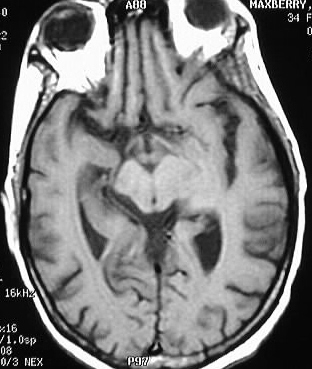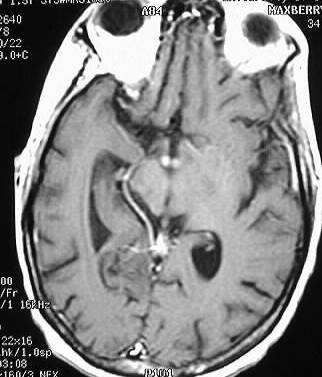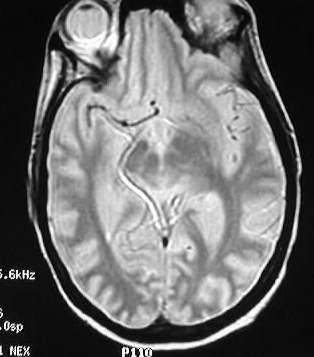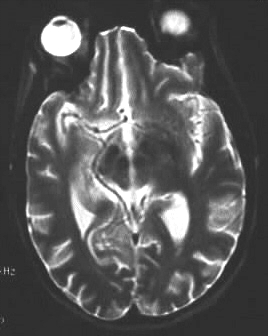



Mamillary body enhancement in Wernicke's syndrome
Findings:
Abnormal enhancement and hyperintense signal is present
in the mamillary bodies. Increased signal is present in the periaqueductal
grey matter as well.
Differential Diagnosis:
No reasonable diagnosis other than thiamine deficiency.
Discussion:
Wernicke's syndrome= nystagmus, opthalmoplegia, gaze
palsy, cerebellar ataxia, and confusion in association with thiamine deficiency.
mamillary bodies hyperintense on T2- also may see hyperintense
periaqueductal gray and hypothalamus, may be associated atrophy of mamillary
bodies.